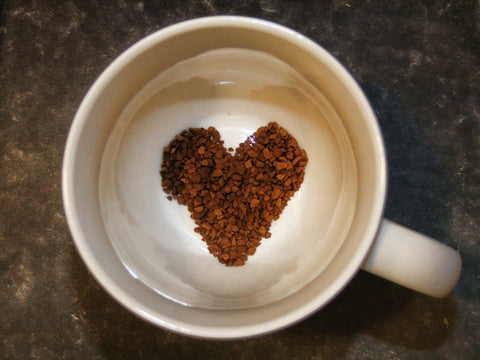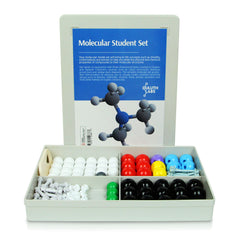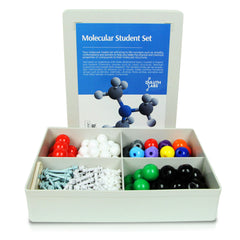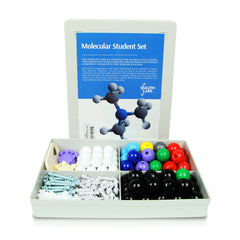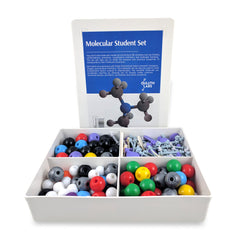Caffeine: A Great Pick Me Up!
Caffeine is classified as a drug produced from plants and seeds. It is classified as a drug because it is able to stimulate the nervous system which leads to excitation, improved alertness and an increase in energy. Natural caffeine is found in teas, coffee, and chocolate, while artificial caffeine is sometimes found in soft drinks, pills and much more.
Naturally, caffeine is very bitter in taste, however, after being processed into soft drinks, sugars are added to mask its bitter taste.
What does Caffeine look like in Chemistry?
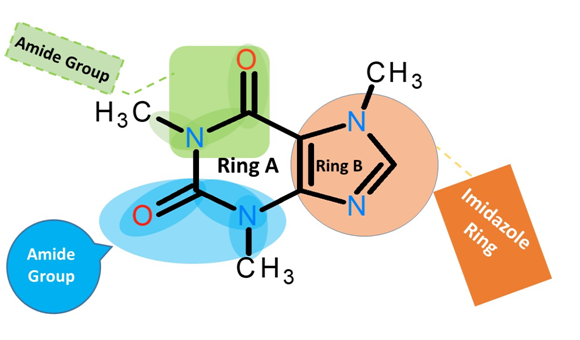
Let’s Get Building!
Using your Student Molecular Set from Duluth Labs let’s create Caffeine! You’ll need:
-
8 Carbon Atoms
-
4 Nitrogen Atoms
-
2 Oxygen Atoms
-
10 Hydrogens
-
10 Small connectors (compact short bonds for hydrogen)
-
11 Medium connectors (single covalent bonds)
-
8 Long connectors (double bonds)
-
Molecular Tool (for Disassembly)
Put aside all the atoms and connectors needed.
Let’s Start Building With Ring A.
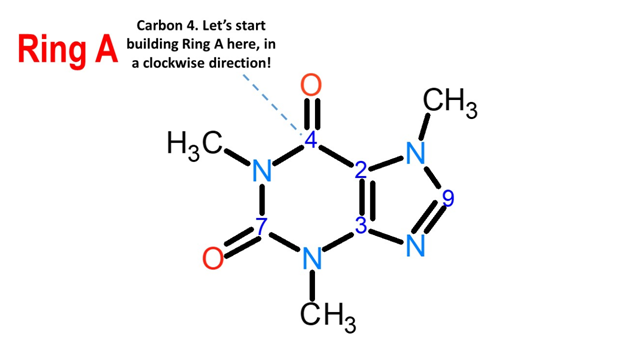
Note: We build this portion in a clockwise direction, starting with Carbon 4.
Let’s start!
Steps:
-
1
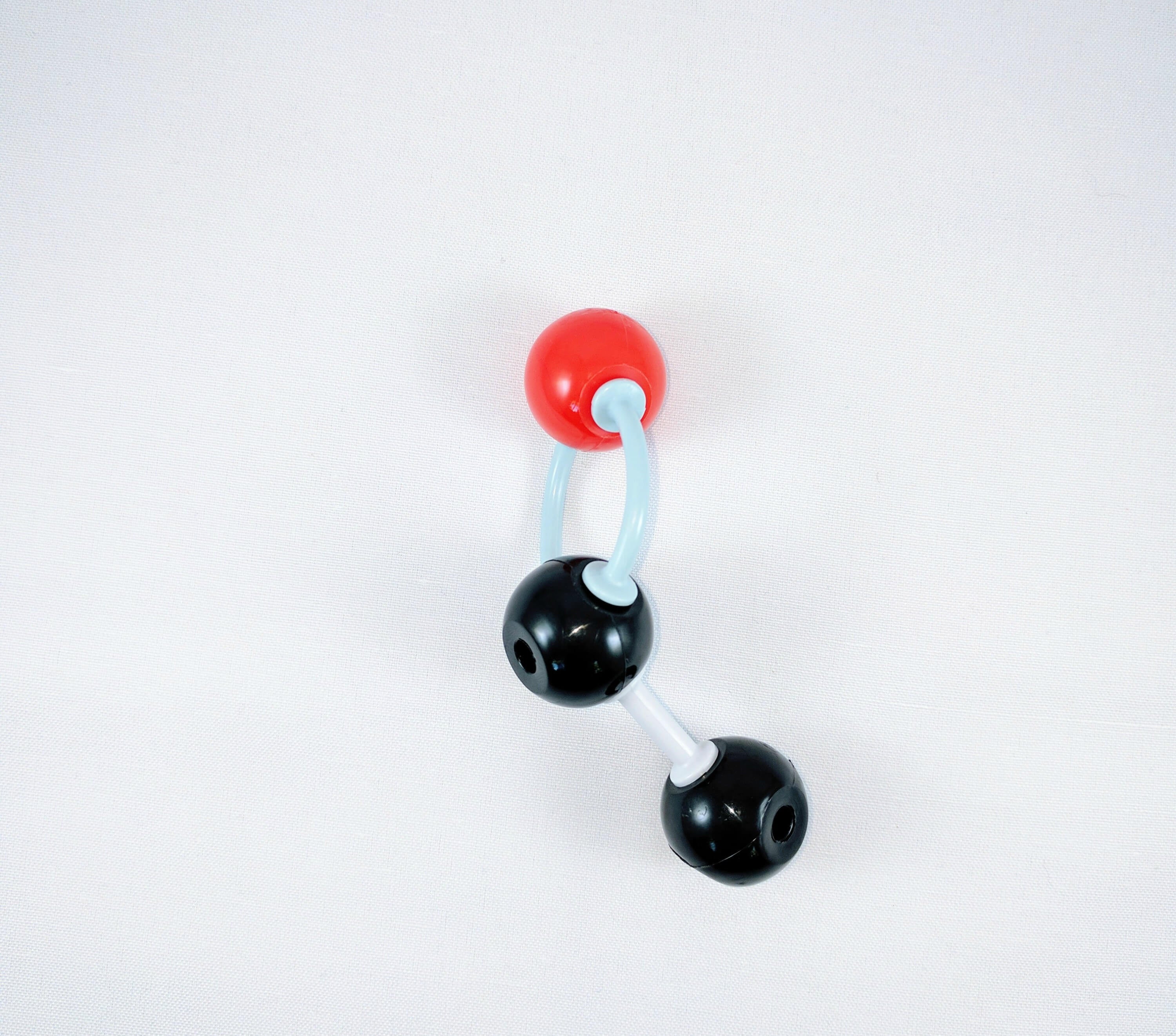
1. Get a Carbon atom (Carbon 4) then attach another carbon atom (Carbon 2),/ to it using a medium connector. On Carbon 4, use 2 long connectors and attach an Oxygen atom.
-
2
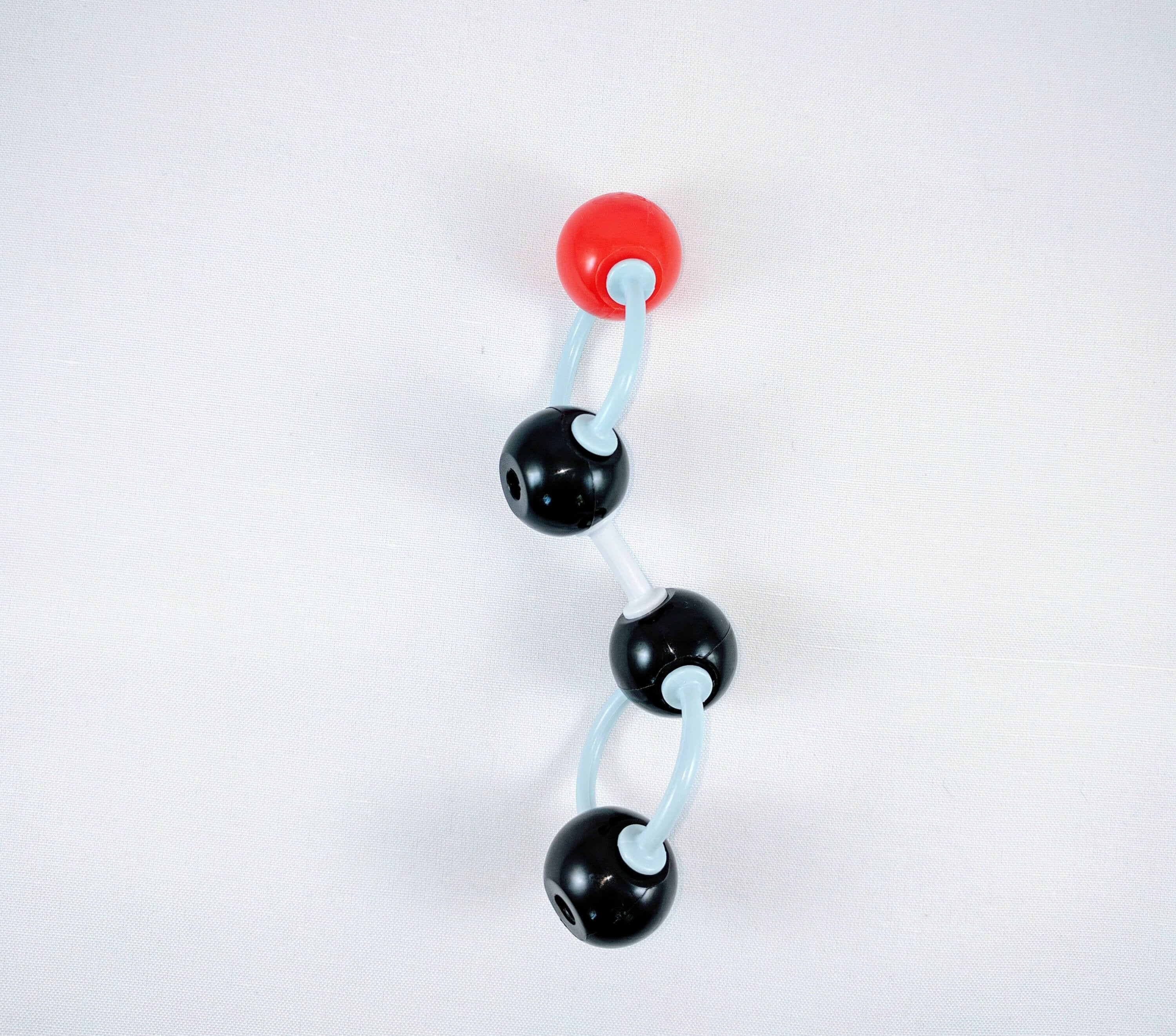
2. Using 2 long connectors, attach another carbon atom (Carbon 3) to Carbon 2.
-
3
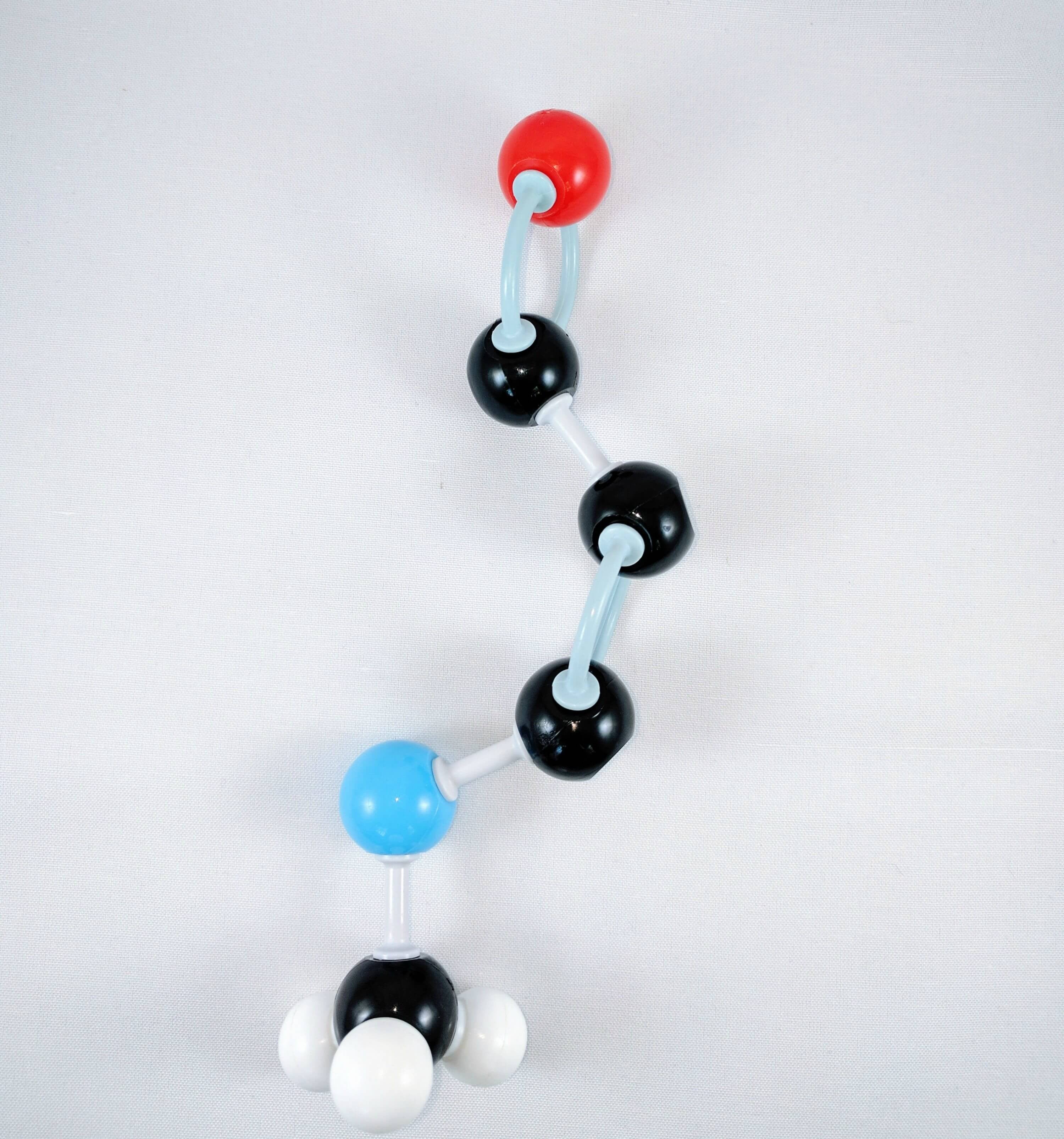
3. Get a Nitrogen atom and using a medium connector, attach this to Carbon 3. Then using a medium connector, attach another carbon atom to the Nitrogen atom. Get 3 short connectors and attach 3 hydrogen atoms to this carbon atom.
-
4
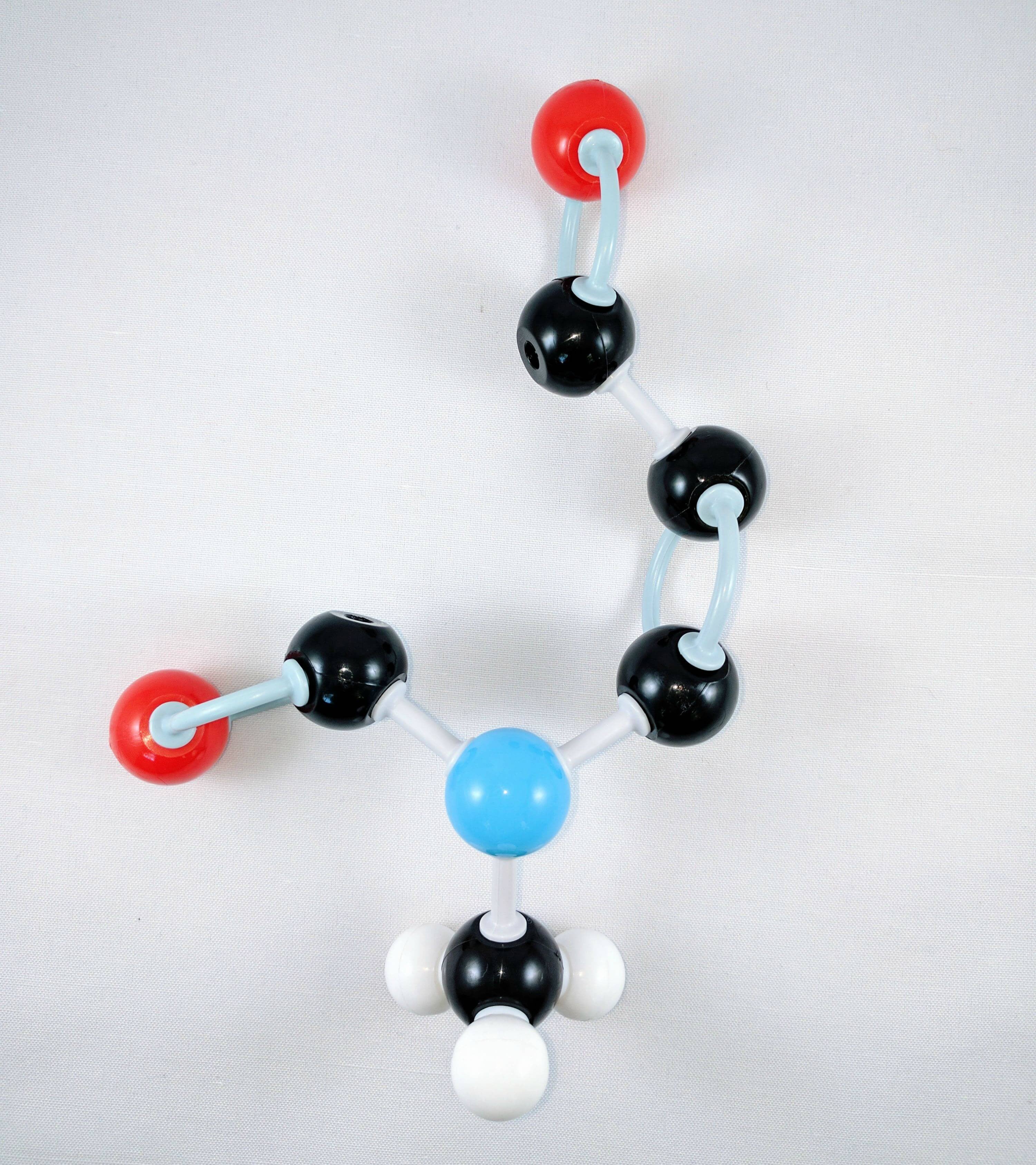
4. Then, using a medium connector, attach a carbon atom (Carbon 7) to the nitrogen atom. Using 2 long connectors, attach an Oxygen atom to Carbon 7.
-
5
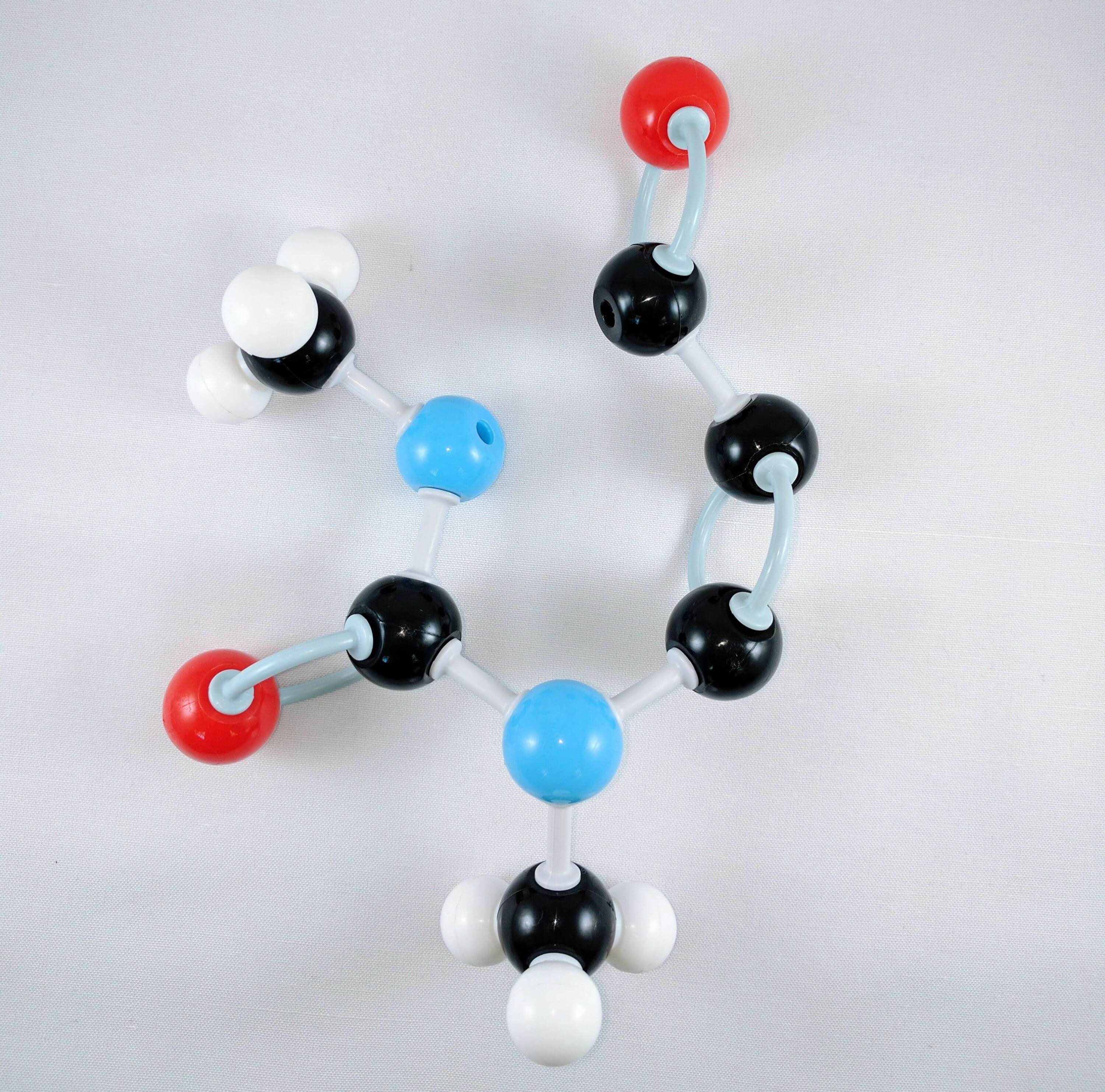
5. Get a medium connector and attach our final Nitrogen atom for Ring A to Carbon 7. Then, using a medium connector attach a carbon atom to this nitrogen atom. Finally, using 3 short connectors attach 3 hydrogen atoms to the carbon atom.
-
6
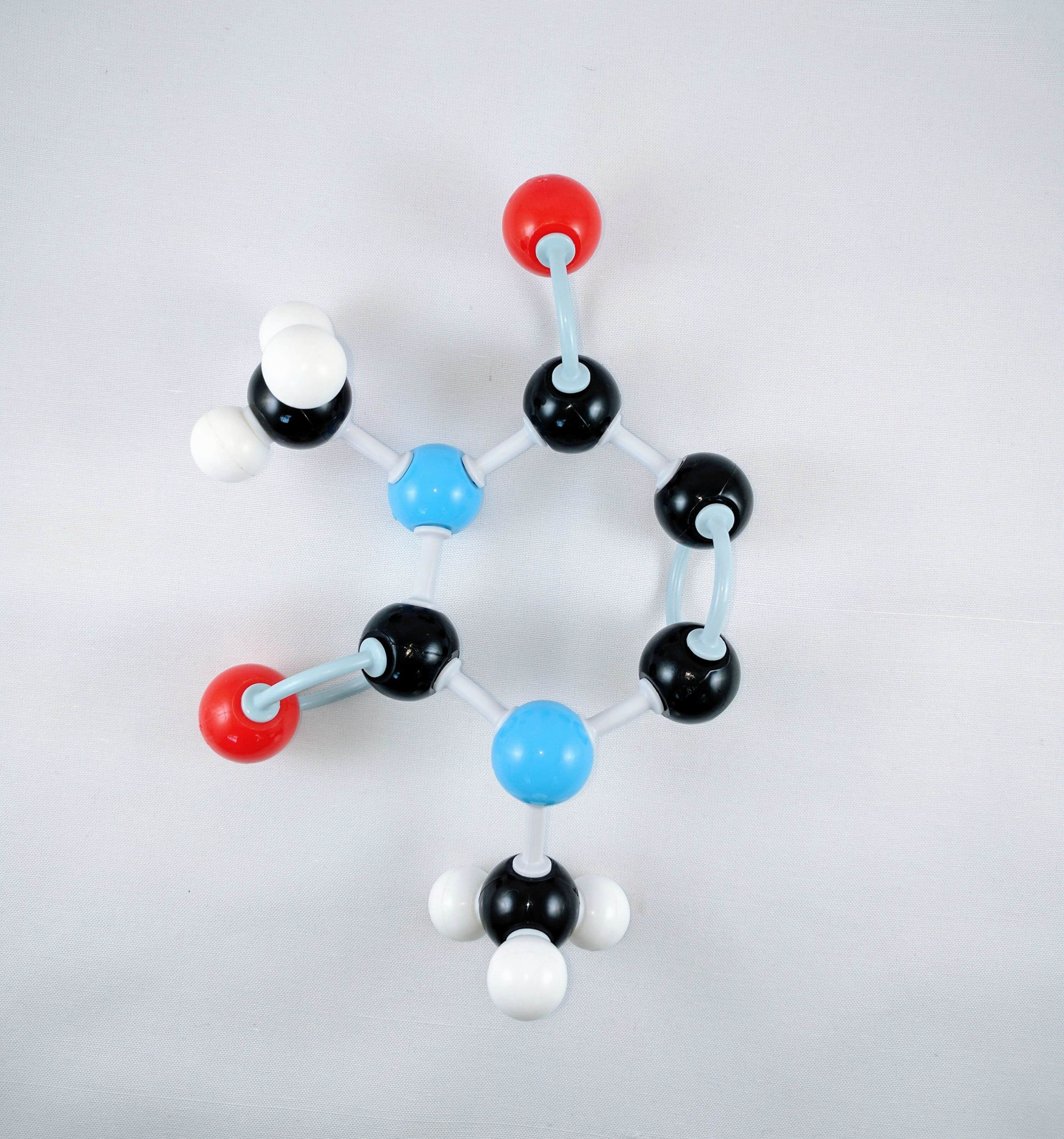
6. Lastly, using a medium connector, connect the Nitrogen atom to Carbon 4.
-

Yay! We've just built Ring A!
Note: Let’s continue by building our Imidazole Ring!
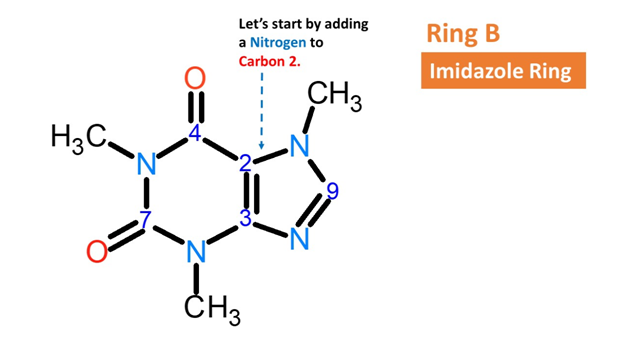
Let’s continue building!
Steps:
-
1
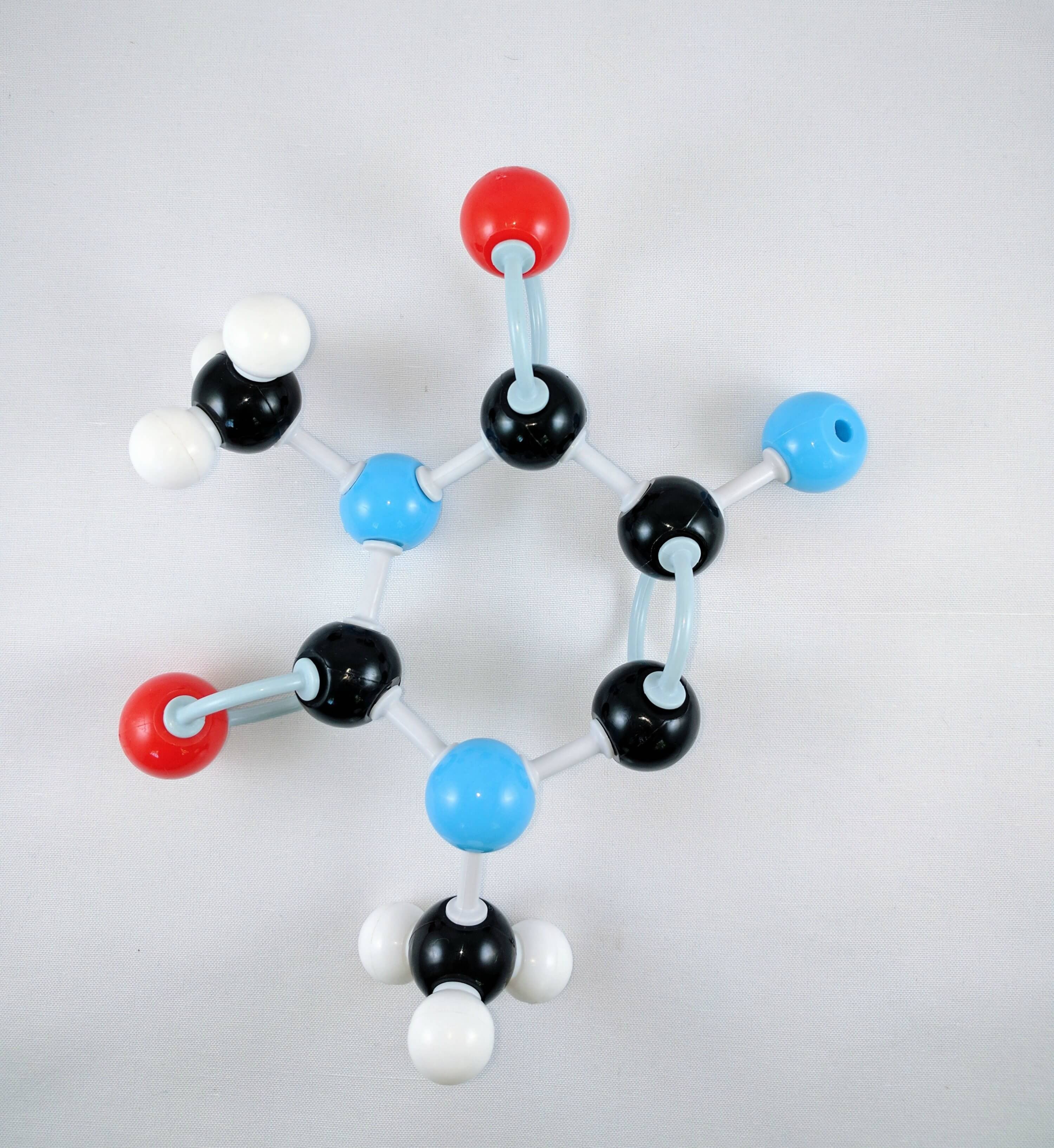
1. Get a nitrogen atom and using a medium connector, attach this to Carbon 2.
-
2
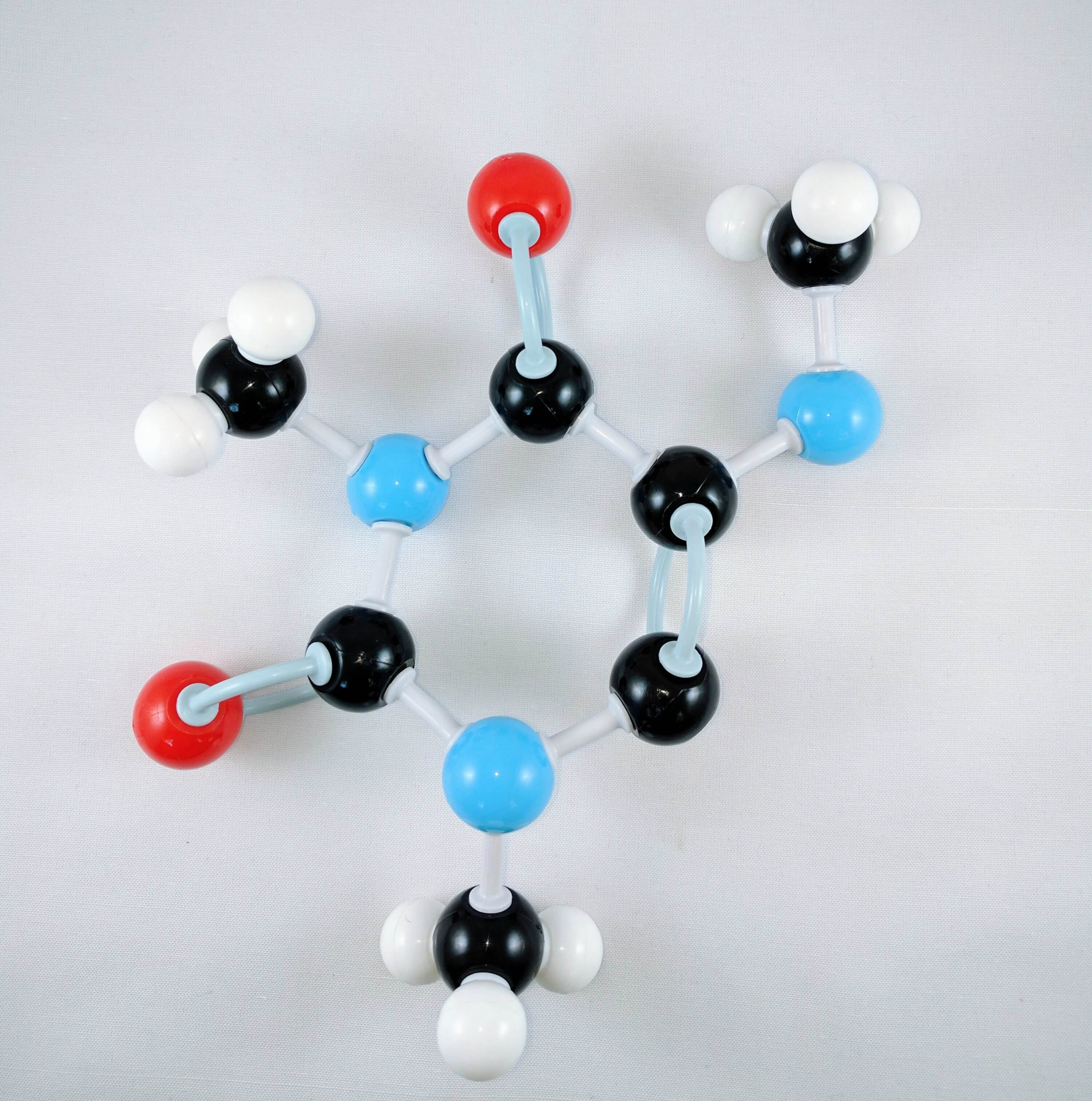
2. Using a medium connector, attach carbon atom at the top of the nitrogen atom. Then using 3 short connectors, attach 3 hydrogen atoms to this carbon atom.
-
3
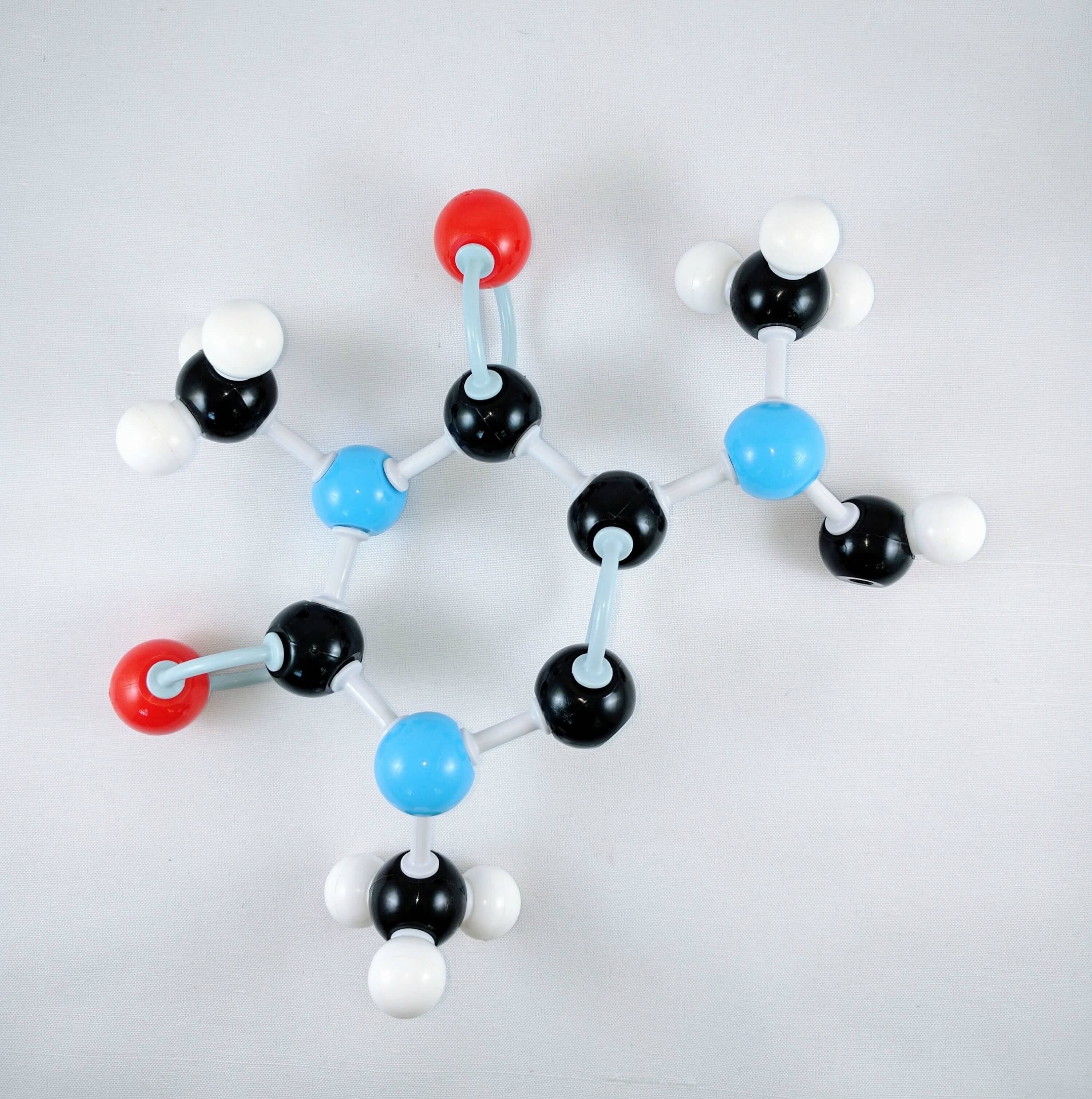
3. Add another carbon atom (Carbon 9) then attach this to Nitrogen using a medium connector. Place one hydrogen atom on carbon 9 using a small connector.
-
4
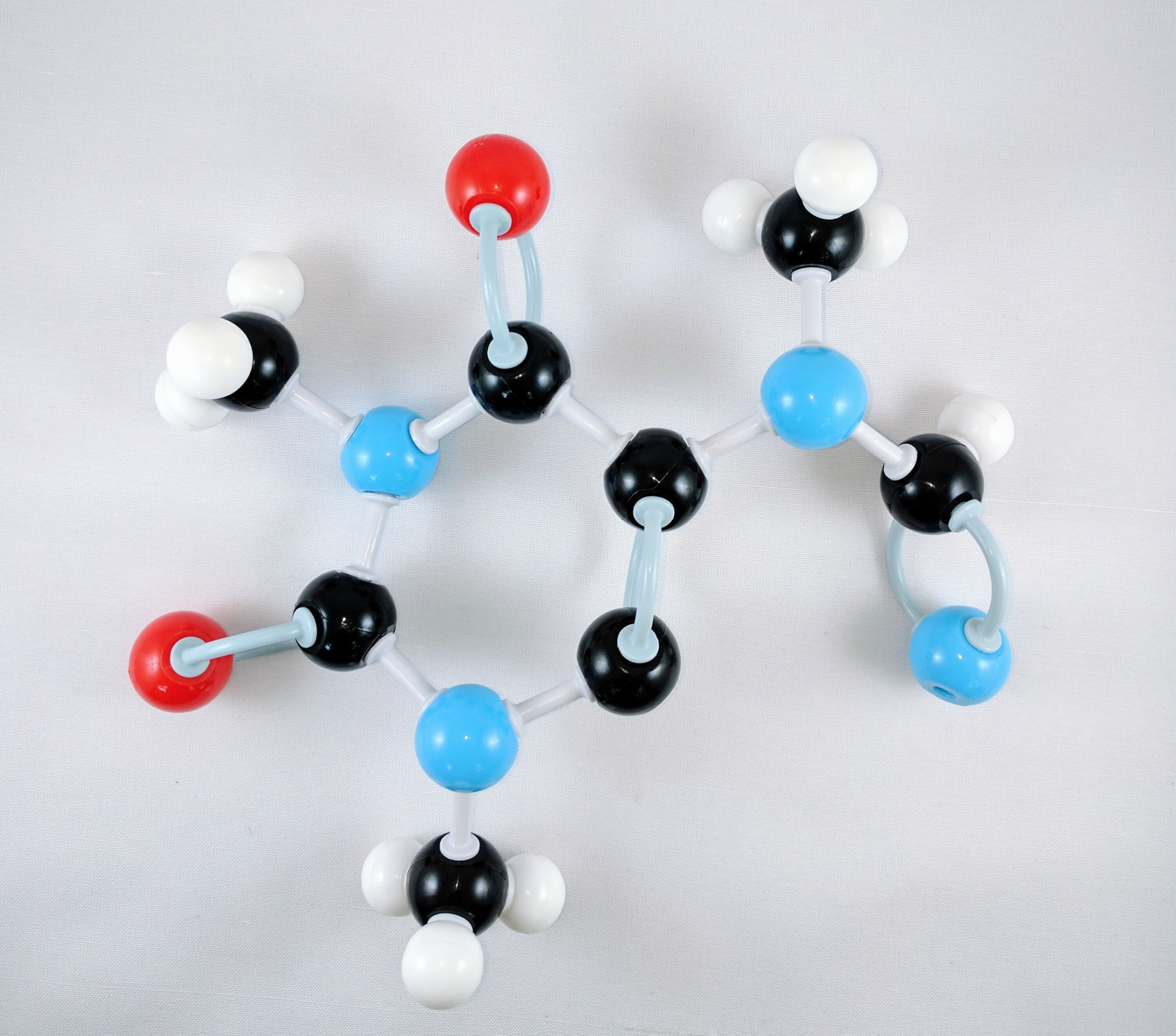
4. Get another Nitrogen atom and then attach this to Carbon 9 using 2 long connectors.
-
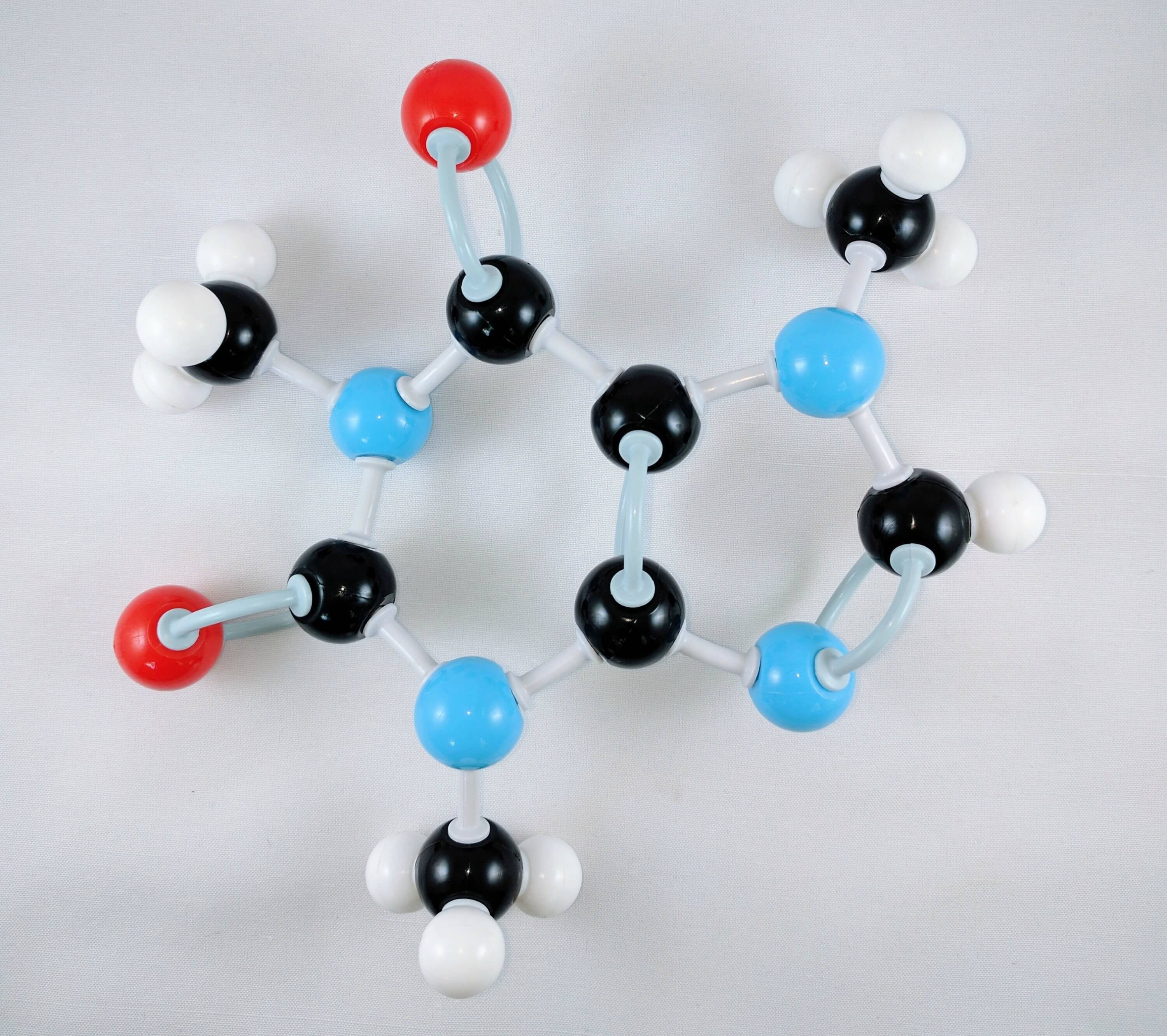
5. Lastly, using a medium connector, join the nitrogen atom to Carbon 3.


